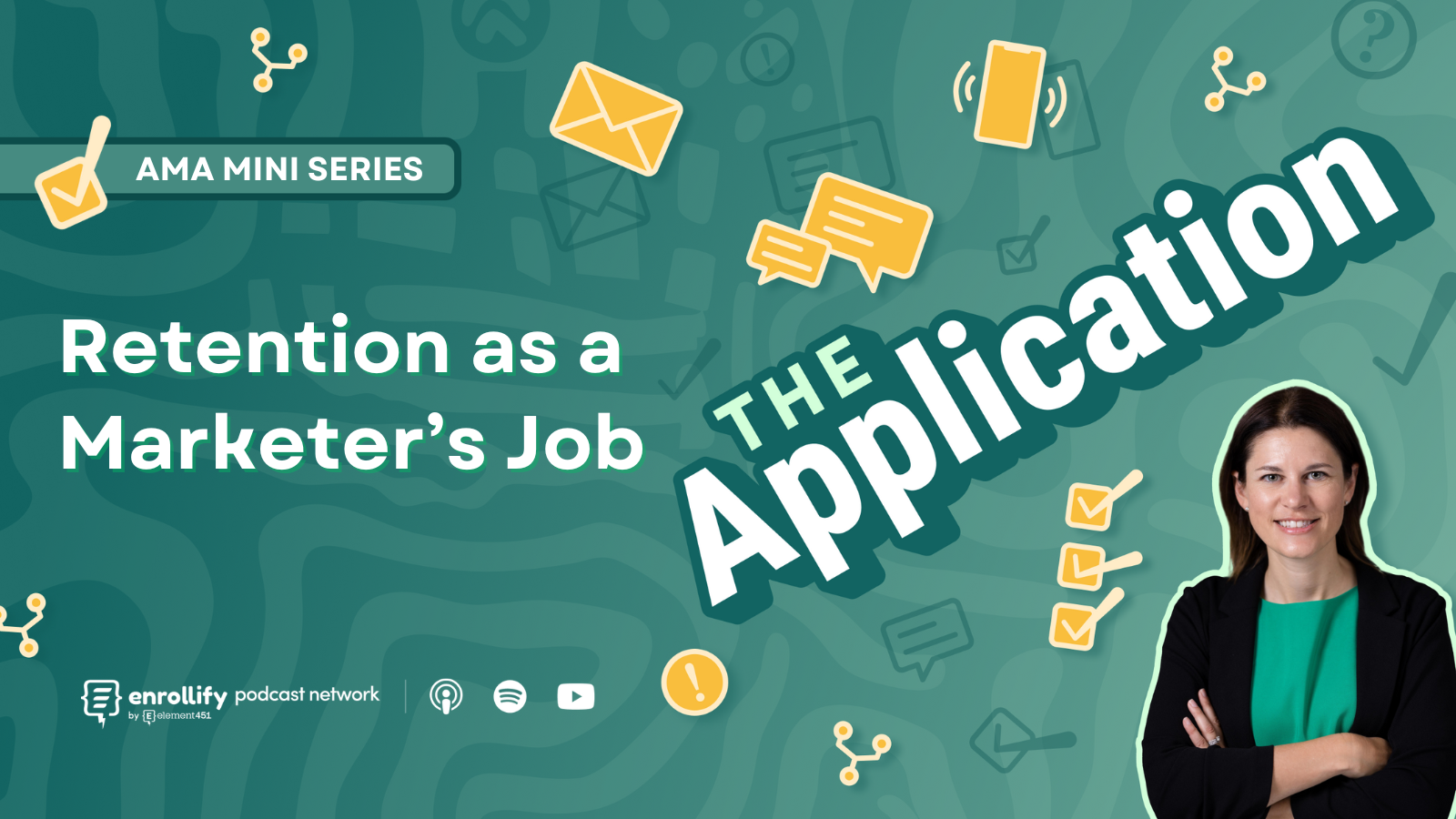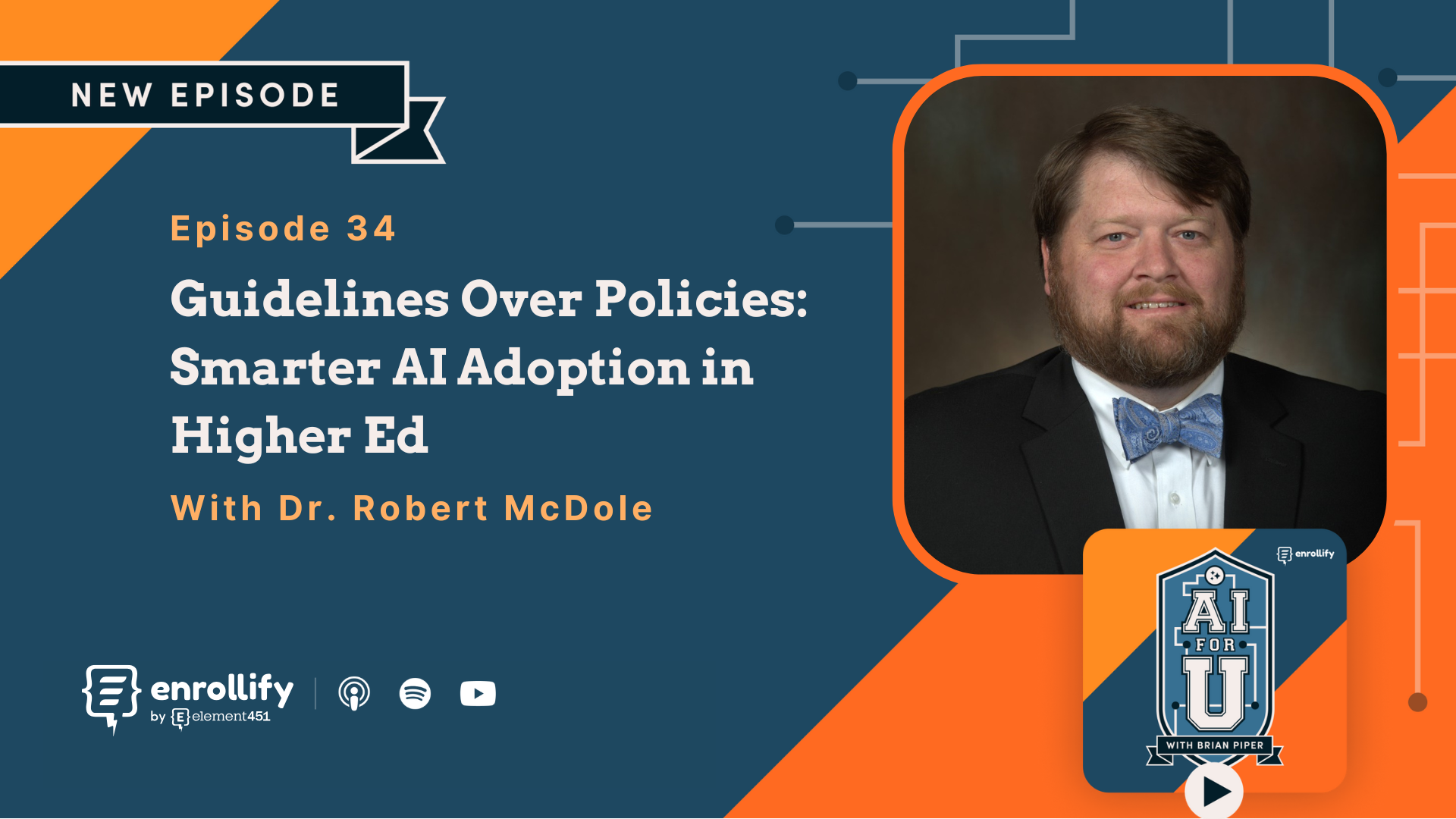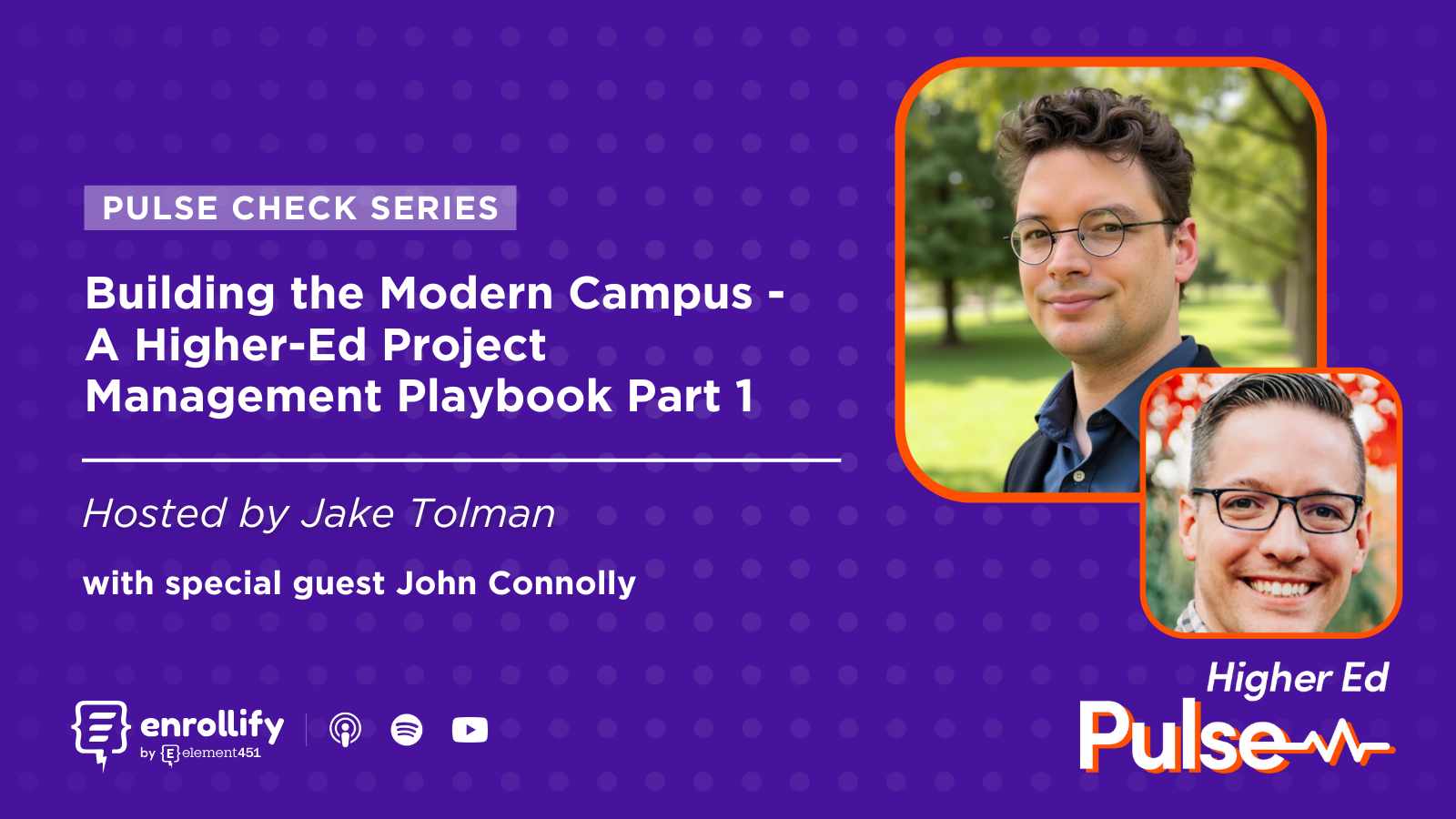About the Episode
In this episode, we delve into the importance of creating a long-term, comprehensive marketing strategy that is inclusive of all students and reflects the college's commitment to diversity, equity, inclusion, and belonging. Shelley stresses that an inclusive marketing strategy is not a quick fix, but a continuous effort to create a student experience that matches the messaging. She gives great advice on how marketers can not only build a strategy that attracts and supports a diverse range of students, but also take a leadership role in DEIB initiatives.
Why Inclusive Marketing Matters
Inclusive marketing is no longer just a buzzword—it is a business imperative. As Shelley notes, we are living in a time when the U.S. adult population is more diverse than ever. Institutions that fail to reflect this reality in their marketing and campus culture risk alienating a significant portion of their audience. Inclusive marketing goes beyond representation. It’s about creating genuine connections with communities and ensuring that the promises made in advertisements are fulfilled in the actual student experience.
For colleges and universities, this means looking at diversity not as a feel-good initiative, but as a strategic advantage. An inclusive campus culture attracts top-tier students, faculty, and staff while fostering an environment where all feel they belong. Inclusive marketing is not simply about diversifying enrollment numbers; it’s about creating an institution where diverse perspectives are valued and celebrated.
From Multicultural to Inclusive Marketing
One of the key distinctions Shelley highlights is the difference between multicultural marketing and inclusive marketing. Multicultural marketing often stops at representation—placing diverse faces in ads without deeper engagement. Inclusive marketing, on the other hand, prioritizes authentic connection. It asks: What do these communities value? How do their experiences align with our institution’s mission?
Shelley emphasizes the importance of aligning external messaging with internal realities. Institutions cannot promise diversity and inclusion in their marketing campaigns without ensuring that their campus culture reflects those values. This disconnect not only undermines trust but can also harm an institution’s reputation.
Challenges Marketers Face
One of the biggest challenges in creating inclusive marketing strategies is operating in silos. Often, marketing teams are disconnected from DEI leaders or student affairs offices, leading to a mismatch between messaging and actual campus experiences. Shelley urges marketers to break down these silos and work collaboratively across departments.
Another challenge is the misconception that DEI initiatives should produce immediate results. Shelley reminds us that DEI work is a marathon, not a sprint. Marketers need to manage expectations while celebrating small wins along the way. She also points out the danger of trying to “quick-fix” diversity through surface-level changes. Authenticity is key, and that requires patience and a long-term commitment.
How Higher Ed Can Lead Inclusively
To create effective and inclusive marketing strategies, colleges and universities must start with a baseline assessment of where they stand. Shelley recommends conducting belonging and inclusion surveys for students, faculty, and alumni to identify gaps in representation and areas for improvement. Listening sessions with diverse groups can provide invaluable qualitative data to complement survey findings.
With these insights, institutions can develop a data-driven strategy that addresses specific gaps while aligning with the university’s broader goals. Importantly, Shelley advises against creating standalone DEI plans. Instead, DEI initiatives should be integrated into the overall strategic plan, ensuring that diversity becomes a natural part of the institution’s culture.
Building a Truly Inclusive Marketing Plan
Shelley outlines several components of an inclusive marketing plan that go beyond the basics of representation. These include:
- Authentic Storytelling: Highlight the experiences of students from marginalized groups in a way that connects meaningfully with prospective students.
- Cross-Department Collaboration: Work with student affairs, faculty, and DEI leaders to ensure that marketing messages align with the actual student experience.
- Empathy in Messaging: Pay attention to language and imagery to ensure inclusivity, not just in race or gender, but across all dimensions of diversity, including disability and socioeconomic status.
Shelley also emphasizes the importance of leveraging student feedback. Students are often eager to share their insights and can be powerful partners in shaping campaigns that resonate with their peers.
What Marketers Can Do Today
Shelley offers several practical steps for marketers to take:
- Start with Assessment: Review past campaigns and solicit feedback from DEI leaders or external consultants to identify areas for improvement.
- Engage Students and Alumni: Tap into the perspectives of current students and alumni to better understand their experiences and how they perceive the institution.
- Diversify Your Team: If hiring is not immediately possible, consider forming advisory groups or engaging diverse vendors to bring new perspectives to the table.
- Celebrate Progress: Share stories of incremental progress to build trust and demonstrate your institution’s commitment to inclusion.
Navigating Mistakes
Mistakes in inclusive marketing are inevitable, but how institutions respond can make all the difference. Shelley stresses the importance of owning up to errors, explaining how they happened, and taking concrete steps to prevent them in the future. Transparency and accountability go a long way in demonstrating an institution’s commitment to learning and growth.
Taking the First Step
To begin the journey toward more inclusive marketing, Shelley advises starting with curiosity and courage. Ask hard questions about existing practices, engage with diverse perspectives, and be prepared to address uncomfortable truths. By focusing on data and aligning marketing strategies with the institution’s values, higher ed marketers can create campaigns that resonate authentically with all audiences.
This Episode is Sponsored by our friends at Element451:
Element451 is an advanced student engagement CRM, providing higher ed institutions with a competitive admissions advantage from recruitment to enrollment through the use of AI, student behavior data, and modern marketing automation.
Register for Element’s Engage Summit
About the Enrollify Podcast Network:
The Application is a part of the Enrollify Podcast Network. If you like this podcast, chances are you’ll like other Enrollify shows too!
Our podcast network is growing by the month and we’ve got a plethora of marketing, admissions, and higher ed technology shows that are jam packed with stories, ideas, and frameworks all designed to empower you to be a better higher ed professional. Our shows feature a selection of the industry’s best as your hosts. Learn from Jeremy Tiers, Zach Busekrus, Jaime Hunt, Allison Turcio, Jamie Gleason and many more.
Learn more about The Enrollify Podcast Network at podcasts.enrollify.org. Our shows help higher ed marketers and admissions professionals find their next big idea — come and find yours!







.png)







